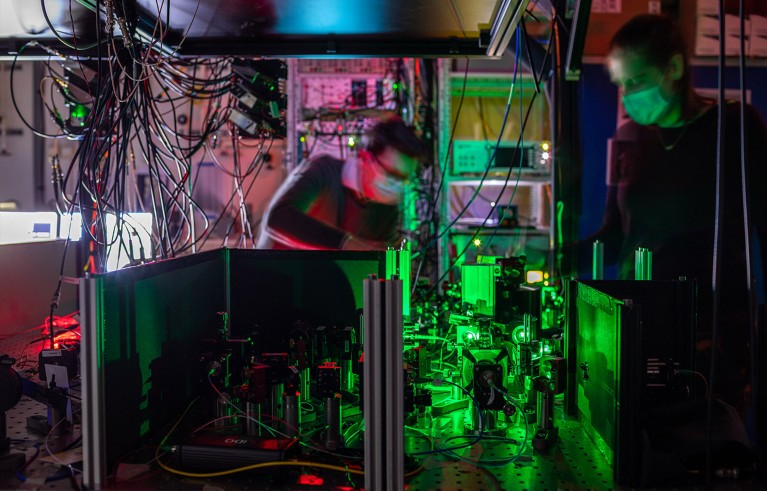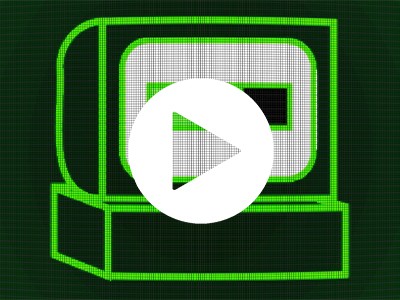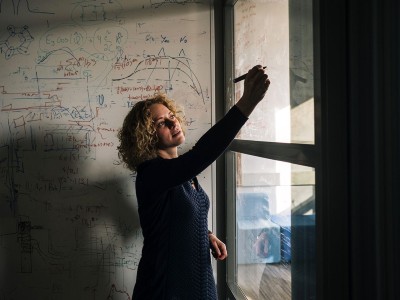
A quantum network node at Delft University of Technology in the Netherlands.Credit: Marieke de Lorijn for QuTech
Three separate research groups have demonstrated quantum entanglement — in which two or more objects are linked so that they contain the same information even if they are far apart — over several kilometres of existing optical fibres in real urban areas. The feat is a key step towards a future quantum internet, a network that could allow information to be exchanged while encoded in quantum states.
Together, the experiments are “the most advanced demonstrations so far” of the technology needed for a quantum internet, says physicist Tracy Northup at the University of Innsbruck in Austria. Each of the three research teams — based in the United States, China and the Netherlands — was able to connect parts of a network using photons in the optical-fibre-friendly infrared part of the spectrum, which is a “major milestone”, says fellow Innsbruck physicist Simon Baier.
How to build a quantum internet
A quantum internet could enable any two users to establish almost unbreakable cryptographic keys to protect sensitive information. But full use of entanglement could do much more, such as connecting separate quantum computers into one larger, more powerful machine. The technology could also enable certain types of scientific experiment, for example by creating networks of optical telescopes that have the resolution of a single dish hundreds of kilometres wide.
Two of the studies1,2 were published in Nature on 15 May. The third was described last month in a preprint posted on arXiv3, which has not yet been peer reviewed.
Impractical environment
Many of the technical steps for building a quantum internet have been demonstrated in the laboratory over the past decade or so. And researchers have shown that they can produce entangled photons using lasers in direct line of sight of each other, either in separate ground locations or on the ground and in space.
But going from the lab to a city environment is “a different beast”, says Ronald Hanson, a physicist who led the Dutch experiment3 at the Delft University of Technology. To build a large-scale network, researchers agree that it will probably be necessary to use existing optical-fibre technology. The trouble is, quantum information is fragile and cannot be copied; it is often carried by individual photons, rather than by laser pulses that can be detected and then amplified and emitted again. This limits the entangled photons to travelling a few tens of kilometres before losses make the whole thing impractical. “They also are affected by temperature changes throughout the day — and even by wind, if they’re above ground,” says Northup. “That’s why generating entanglement across an actual city is a big deal.”
The three demonstrations each used different kinds of ‘quantum memory’ device to store a qubit, a physical system such as a photon or atom that can be in one of two states — akin to the ‘1’ or ‘0’ of ordinary computer bits — or in a combination, or ‘quantum superposition’, of the two possibilities.
The quantum internet has arrived (and it hasn’t)
In one of the Nature studies, led by Pan Jian-Wei at the University of Science and Technology of China (USTC) in Hefei, qubits were encoded in the collective states of clouds of rubidium atoms1. The qubits’ quantum states can be set using a single photon, or can be read out by ‘tickling’ the atomic cloud to emit a photon. Pan’s team had such quantum memories set up in three separate labs in the Hefei area. Each lab was connected by optical fibres to a central ‘photonic server’ around 10 kilometres away. Any two of these nodes could be put in an entangled state if the photons from the two atom clouds arrived at the server at exactly the same time.
By contrast, Hanson and his team established a link between individual nitrogen atoms embedded in small diamond crystals with qubits encoded in the electron states of the nitrogen and in the nuclear states of nearby carbon atoms3. Their optical fibre went from the university in Delft through a tortuous 25-kilometre path across the suburbs of The Hague to reach a second laboratory in the city.
In the US experiment, Mikhail Lukin, a physicist at Harvard University in Cambridge, Massachusetts, and his collaborators also used diamond-based devices, but with silicon atoms instead of nitrogen, making use of the quantum states of both an electron and a silicon nucleus2. Single atoms are less efficient than atomic ensembles at emitting photons on demand, but they are more versatile, because they can perform rudimentary quantum computations. “Basically, we entangled two small quantum computers,” says Lukin. The two diamond-based devices were in the same building at Harvard, but to mimic the conditions of a metropolitan network, the researchers used an optical fibre that snaked around the local Boston area. “It crosses the Charles River six times,” Lukin says.
Challenges ahead
The entanglement procedure used by the Chinese and the Dutch teams required photons to arrive at a central server with exquisite timing precision, which was one of the main challenges in the experiments. Lukin’s team used a protocol that does not require such fine-tuning: instead of entangling the qubits by getting them to emit photons, the researchers sent one photon to entangle itself with the silicon atom at the first node. The same photon then went around the fibre-optic loop and came back to graze the second silicon atom, thereby entangling it with the first.
Pan has calculated that at the current pace of advance, by the end of the decade his team should be able to establish entanglement over 1,000 kilometres of optical fibres using ten or so intermediate nodes, with a procedure called entanglement swapping. (At first, such a link would be very slow, creating perhaps one entanglement per second, he adds.) Pan is the leading researcher for a project using the satellite Micius, which demonstrated the first quantum-enabled communications in space, and he says there are plans for a follow-up mission.
“The step has now really been made out of the lab and into the field,” says Hanson. “It doesn’t mean it’s commercially useful yet, but it’s a big step.”

 The quantum internet has arrived (and it hasn’t)
The quantum internet has arrived (and it hasn’t)
 How to build a quantum internet
How to build a quantum internet
 Quantum network is step towards ultrasecure internet
Quantum network is step towards ultrasecure internet



